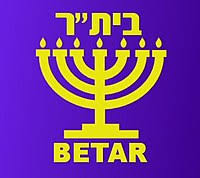Beitar (Brit Yosef Trumpeldor)
Zionist-activist youth movement that espoused right-wing ideology. Founded in 1923 in Riga, Latvia, as a youth movement of the Union of Zionist Revisionists (UZR), which became the New Zionist Organization (NZO) in 1935. This movement spread in Poland and other European countries, and its leader was Ze’ev Jabotinsky. The movement operated based on three basic principles: the establishment of a Jewish state, active defense and halutziut[1] – taking the lead. Zionism was considered fundamentally “egalitarian” and Beitar rejected Socialist Zionism, advocating instead for a hierarchy of command positions in its ranks. Beitar founded settlements in Eretz Israel (Palestine) and promoted illegal Aliyah and active resistance to the British Mandate in Palestine. Beitar began establishing chapters in Hungary in the early 1930s, and by 1935 was an athletic union within the Zionist Organization, until the organization ousted Beitar from its ranks.Beitar then operated as an independent youth movement and established chapters in Budapest and other cities throughout the country. The educational units in Beitar were called Tzror, and each had an instructor and 10-12 members. Only young men who passed “new recruit tests” were accepted to the movement, and its older members also participated in military training.
During WWII, Beitar was involved in defense and rescue activities, including the establishment of five bunkers in Budapest. One of these, in one of the capital’s suburbs, was discovered by the fascists, and those taking refuge in it were killed in a shootout. After the city’s liberation, in 1945, Beitar was very active among the surviving youth, and encouraged its members to make Aliya. The movement was in constant confrontations with the Zionist institutions operating in Hungary, sometimes cooperating with them, but mostly operating on its own. In 1948 a Beitar emissary was arrested by the Communist government and the movement ceased its overt activities, but continued operating underground.
[1] The Halutz is an ideal, embodies a new type of humanity, a manual worker, as far as possible agricultural worker, widely read, well informed, cultured, inquirer, active in the political, intellectual and cultural aspects of the community. He does utmost to create the communal life even to give up his personal interest. The halutz isn’t the “pioneer”, member the young age group in the Komsomol, the youth movement of the Communist Party in Soviet Union. He is not the “pioneer,” that conquered the wild west in America and massacred the native Indians.

